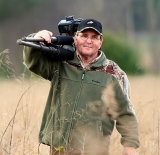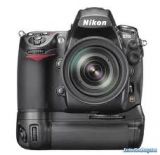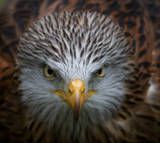- Forum
- Photography and Camera Forum
- Taking the Photo | Editing | The art of Photography!
- Beginner Photography Forum
- Lenses and more lenses..I don't know where to begin
Lenses and more lenses..I don't know where to begin
-
 Topic Author
Topic Author
- Adventurer
- Newbie
-
- Canon EOS Rebel
- Followers: 3
- Posts: 1
-
Points:
0
Post #183113
I've been doing wildlife photography ( plus.google.com/u/0/photos/1143083454677.../5627433733727966001 ) for about four years with a point and shoot and am now taking the step to a DSLR. I now know nothing about the one thing I'm good at lol. I have a Canon Rebel T2i which came with a 18-55 and a 55-250 lens. I know to get the magnification you divide the larger number by the smaller so with the 55-250 it's approximately 4.5X not including the crop factor. My question is what exactly do those measurements mean? For example a 70-300 is only 4.2X magnification yet it is longer (obviously) then the one I have. What would be the advantage of that lens vs the 55-250? Does the fact that it's longer means it actually gets a little closer and ends with a better zoom? Guess I better start reading and taking classes so I can stop asking stupid questions LOL...
Mark
-

- Baydream
- Moderator
-
- Canoni/60D/70D/5DmkIII
- Followers: 388
- Posts: 11185
-
Points:
7280
Post #183127
The mm is the distance from the front lens to the sensor, A zoom lens allows shifts in the internal glass to focus the image closer or farther. The lens you have give you a full range from 18mm to 250mm on a film or "full frame" (35mm) sensor. The "crop factor for your camera is 1.6 so at 100 mm setting, the lens "acts" like a 160mm on film. Don't be concerned about the individual zooms mult factor - it doesn;t mena anything really (Compacts use it to advertise their zoom range) but not DSLRs.
The larger number on the zoom is the "reach" factor. A 300 mm will get you a bit closer than the 250MM but only by 50mm.
I shoot wildlife so the 300 gives me that little extra magnification over a 250. My two lenses are 18-55 and 70-300 so I have a "gap" between 55mm and 70mm (plus I have a 50mm 1.8 for lower light use). You have a complete range without a gap. You will do quite will with the 55-250 as you learn to use your new camera. Once you learn it, you will decide whether an extra 50mm in important or a "faster" lens allowing in more light and faster shutter speeds. You might decide to add a 1.4x teleconverter (your 250 will be like a 350 but you will lose an fstop of light.
Summary, use and practice with what you have (it's a NICE starter set) and learn everything you can about using it.
Shoot, learn and share. It will make you a better photographer.
fineartamerica.com/profiles/john-g-schickler.html?tab=artwork
-

- KCook
- Photo Elder
-
- Canon EOS 50D and Olympus E-P5
- Followers: 1325
- Posts: 5410
-
Points:
32913
Post #183149
www.photographytalk.com/forum/photograph...42-reachfocal-length
Kelly Cook
-

- Stealthy Ninja
- Moderator
-
- Fuji X stuff and a 1DsIII for some reason
- Followers: 982
- Posts: 16300
-
Points:
6837
-

- bhowdy
- The Lounger
-
- Canon 1d Mark IV
- Followers: 138
- Posts: 1277
-
Points:
52
Post #183240
Bob Howdeshell
"If I could tell the story in words, I wouldn't need to lug around a camera" ~ Lewis Hine
-

- The Photo Guy
- New Kid On The Block
-
- Nikon D700
- Followers: 49
- Posts: 38
-
Points:
0
Post #183331
As you proceed to get into bigger focal lengths, 400mm, 500mm etc.. the lenses will become longer and heavy.
-

- TheNissanMan
- Moderator
-
- Canon 7D
- Followers: 34
- Posts: 826
-
Points:
135
Post #183376
Yes the longer the lens gets closer, but, not necessarily better! The 55-250 is probably Canons best budget zoom imo, the 70-300 IS USM is a tad more expensive but also a very good zoom for the money (I have hd the fortune of owning both).
Lenghts and quality are two very different things
If you want to go longer still while maintining optical quality the 100-400L is a stunning lens although slightly cheaper and with slightly worse optical quality the Sigma 120-400mm might be worth a look
- Forum
- Photography and Camera Forum
- Taking the Photo | Editing | The art of Photography!
- Beginner Photography Forum
- Lenses and more lenses..I don't know where to begin
Latest Reviews
The Olympus Pen E-P7 is an affordable micro four thirds mirrorless camera with 4K video capabilities, a 20.3MP sensor, and 121 focus points, making it a solid entry-level camera for beginners.
The Panasonic G9 II is a 25.2-megapixel micro four thirds camera with numerous features that make it punch out of its weight class, like 779 AF points, 5.8K video, and weather sealing.
The Fujifilm XT5 is a 40MP mirrorless camera capable of 6.2K video at 30p. With those specs, it’s an ideal choice for photographers needing a camera to pull double duty for imaging and video.
The Canon EOS R100 is an entry-level mirrorless camera introduced in 2023. But just because it’s an entry-level camera doesn’t mean it’s a bare-bones camera. Find out why in this review!
Forum Top Posters
-
1Shadowfixe... 2 posts
-
2Charlie Bernstein 1 post
-
3Scotty 1 post
Latest Articles
Large format prints are a fantastic way to celebrate your photographic accomplishments. You can see your best work in a beautiful format (and show it off to others, too!).
Some bird photography gear is obvious. You need a camera, a lens, and a tripod. But what are the best options in these and other categories of gear? Let’s find out!
Having a zoom lens in your bag is like having a jack of all trades. These lenses cover broad focal ranges so you can use one lens for multiple photographic pursuits.
Capturing beautiful portraits requires an understanding of compositional techniques (and a lot of other things). In this guide, learn how to master low-angle portrait composition for beautiful results!
Tree photography is an interesting genre of landscapes that use the size, shape, and texture of trees as the primary element of interest. With these quick tips, you can master the art of photographing trees!
Auto white balance is a camera setting that adjusts the color temperature of your images automatically. It often works well, but you should know a few tips to fix problems it might cause, too.
The Canon EOS 5D Mark III might be more than a decade old, but it still has the chops to be a quality camera for photographers in 2024.
Starting a photography business can be a daunting task. There is a lot to do, and many mistakes can be made. This guide helps you minimize mistakes and maximize your success!


















